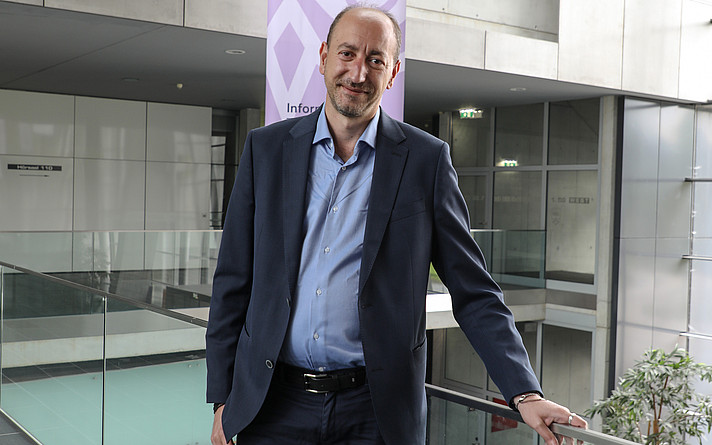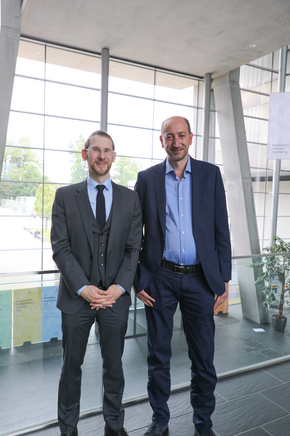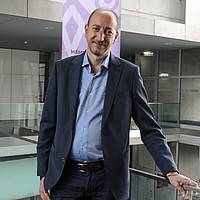Seit 1. Juli 2025 verstärkt Dimitris Simos das Department Information Technologies & Digitalisation als Brückenprofessor für Cyber Security. Die Professur wurde im Rahmen der EXDIGIT-Initiative des Landes Salzburg eingerichtet und ist als gemeinsame Berufung mit der Paris Lodron Universität Salzburg (PLUS) konzipiert. Ziel ist es, den Austausch in Lehre und Forschung zu bündeln und Synergien im Bereich Cyber Security zwischen Hochschule und Universität zu schaffen.

Simos lehrt ab September englischsprachige Fächer in den Bachelorprogrammen und wird künftig auch den Masterstudiengang Cyber Security mitgestalten. Er forscht an methodischen Grundlagen für sichere IT-Systeme, mit Fokus auf automatisiertes Testen, mathematische Modellierung und verlässliche IT-Architekturen.
Mit über 150 wissenschaftlichen Publikationen zählt er international zu den führenden Köpfen an der Schnittstelle zwischen Mathematik, Informatik und IT-Sicherheit.
Wir haben mit Dimitris über seine neue Aufgabe gesprochen.

What originally drew you to computer science – and to cybersecurity in particular?
From an early stage, I was drawn to the elegance of mathematics and its ability to solve real-world problems. Computer science provided the perfect environment to apply discrete mathematics and algorithmic thinking to concrete challenges. My focus on cybersecurity evolved naturally from my research in combinatorics, where I saw clear opportunities to improve the reliability and trustworthiness of IT systems and later on bridge discrete mathematics with information security via combinatorial testing.
What role does mathematics play in your research, especially in the context of IT security?
Mathematics is for me the science of relations. It provides the language we use to model, test, and reason about complex systems. In the cybersecurity domain, this translates into designing combinatorial models for system testing, applying discrete structures to reason about software vulnerabilities and combine both these layers in critical infrastructure. Mathematical rigor enables us to deliver not just heuristics, but provide mathematical guarantees about system behavior, coverage of its parameters and the detection of security vulnerabilities.
From your perspective, what are currently the most exciting questions in cybersecurity research?
I believe the most exciting questions lie at the intersection of formal rigor and real-world applicability: How can we test the security of autonomous systems such as AI-driven or the rapidly evolving cyber-physical systems? How do we build resilient infrastructure in the face of both natural and technological threats (e.g. Natech or simply blackout scenarios)? These questions challenge both our theoretical foundations and our engineering capabilities.
What can students expect from your classes – and what can they look forward to?
Students can expect a strong connection between theory and practice. I bring real-world research problems into the classroom, whether it's how to model security configurations, generate effective test cases, or assess vulnerabilities. They’ll gain insights into state-of-the-art methods in cybersecurity and resilience—and have the opportunity to contribute to hands-on labs, ongoing research projects, including publications and international collaborations.
What do you find particularly exciting about your role as a bridge professor?
What excites me most is the ability to bridge not only two institutions, but also theory and application, research and teaching, academia and industry so essentially create scientific, teaching and organizational bridges across both academic and applied research sectors. Through the Joint Professorship, which is established as a state-funded Bridge Professorship through the EXDIGIT initiative from the State of Salzburg, I can align cutting-edge mathematical research with applied cybersecurity challenges, mentor interdisciplinary teams, and contribute to long-term strategic initiatives. As a first step, the establishment of a Christian Doppler Laboratory or Josef Ressel Centre could be pursued, building on a core research focus in mathematics for testing, resilience and information security.

